What Pest is on My Hibiscus?
Infestation! The last thing you want to see when you’re tending your garden. Especially when you’re pottering about with your hibiscus. Easily one of the most beguiling of the flower species with its immense size and vibrant color selection, hibiscus is often the absolute star of your garden patch or patio. The last thing you want is pests on it.
There are so many bugs and critters wallowing around in your soil that do amazing things for your hibiscus plants. These are creatures that recycle waste, create nutrients, feed off critters that feed off your plants, and otherwise do good deeds where the health of your garden is concerned. These are the good guys, and we are not concerned about them. We need to address the issue of the other side, the enemy combatants, the bad guys in your garden.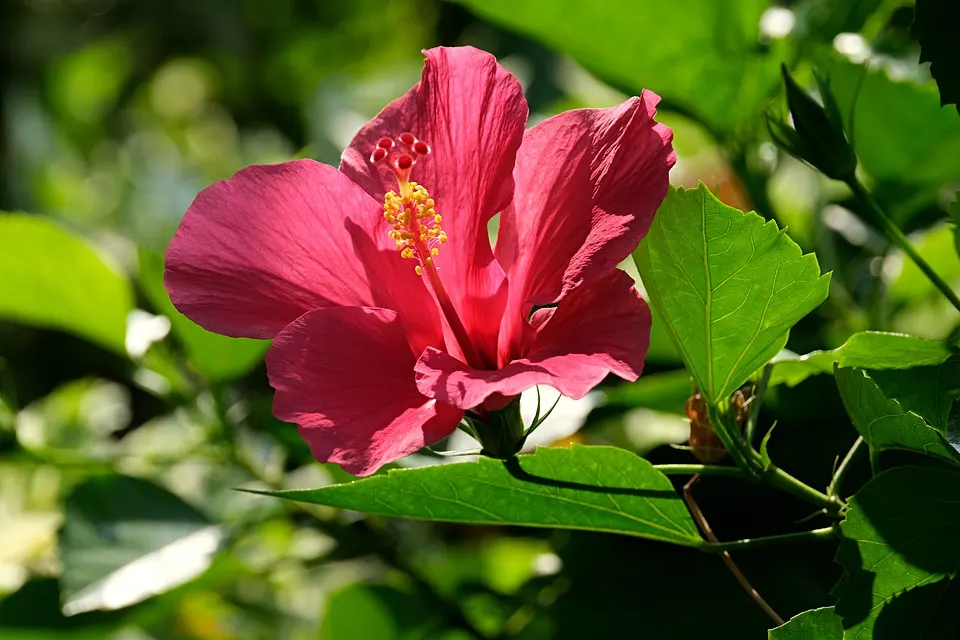
The Pests that Infect Hibiscus Bonsais
Villains come in many forms and are known by many different names; those that we’re dealing with in this article can do severe damage to your garden, more particularly, your hibiscus. Not all plants are affected by the same organisms, so it’s always better to have access to species-specific information.
The main culprits we’ll be tackling are some of the usual sorts like aphids and caterpillars. But we’ll also take a look at some you may not have thought about, such as earwigs. All of these pests pose a real and ever-present danger to your beautiful hibiscus.
Aphids
We’re starting off with a particularly interesting critter. Aphids are incredible marvels of biological evolution. The typical life cycle of an aphid starts with the flightless female variant of the species giving birth to what can only be described as pregnant female babies. Yes, unfortunately, you read that right. Aphids have evolved to no longer need males for reproduction in most cases.
They’ve also evolved via a phenomenon called telescopic development, to be born containing fully fertilized eggs. This means that aphids are among the fastest spreading organisms that are out to get your hibiscus. At some point during their lifecycle, some of the aphids may develop wings and move to other plants around your garden.
Over 5,000 species of aphids have been discovered so far, and they’re all grouped under the family Aphididae. Most aphids spend their lives vacillating between two main types of plants, annual crops, and more woody varieties. Within the flower kingdom, many species of aphid have developed a taste for both annuals and perennials, of which hibiscus can be either, depending on its species.
This means that your hibiscus is likely not immune to aphid attacks. Unfortunately, that beautiful flowering shrub in your garden that wows your garden-loving friends and social media groups is a much-loved type of biological material for aphids.
If you’re looking for aphids, check the underside of your hibiscus; this is their favorite place to snack. Also, keep an eye on your hibiscus and take note of whether its leaves are yellowing, curling, or turning brown. There are numerous causes for yellow leaves on hibiscus, and unfortunately, aphids are one of them. Aphids also leave behind a sticky residue once they are finished feeding and have moved on, so you can tell if your plant was affected but is no more. Just to be clear, aphids don’t usually move on of their own volition, at least not without trying to obliterate your hibiscus.
Aphids are around a quarter-inch long and come in many shades of white, green, yellow, black, red, and brown. They have soft-looking pear-shaped bodies and can even look woolly. Aphids destroy your plant by leaching vital sap from them using their specially adapted mouths. No part of your hibiscus is safe; Aphids will happily feast on the stem, leaves, buds, flowers, and even its roots.
We’ve covered what they are and how to spot them, no only one question remains. How do we eradicate a pest that has evolved to develop into maturity faster than most others and can thus also do a lot more damage than most in a shorter time?
Hit Them With a Hose
This is the easiest way to deal with a young or minor infestation of aphids on your hibiscus. Don’t get too wild and hit your plants with a pressure hose, but hose them down and use the water flow to get rid of the aphid infestation. Target all of the affected areas, including the undersides of the leaves and around the base of your flowers. Don’t be scared to do this every few days until your plant is free of aphids. It could take up to two weeks for the infestation to be cleared completely.
Homemade Aphid Spray
You can safely make a homemade insecticidal soap that won’t damage your hibiscus and its beautiful flowers. All you need is a few teaspoons of dish soap mixed with a bit of water. You don’t need terribly precise measurements; all you’re looking for is soapy water. This solution desiccates the aphids’ soft bodies and turns them into nothing more than biological nutrients.
Make sure that you spray or wipe down the entire plant, including the underside of the leaves and around the flowers. Repeat this process every few days until there are no more aphids left. Unlike the hose method, which simply washes the aphids away, this method kills the aphids while they are still on the plant, so there’s no risk of this particular generation of aphids returning.
Systemic Pesticide
Pesticide ingredients like Imidacloprid are your last resort when it comes to ridding your hibiscus of aphids. Most pesticides that contain this ingredient will kill aphids indiscriminately while leaving pollinators like bees, butterflies, and hummingbirds to do their beautiful work in peace.
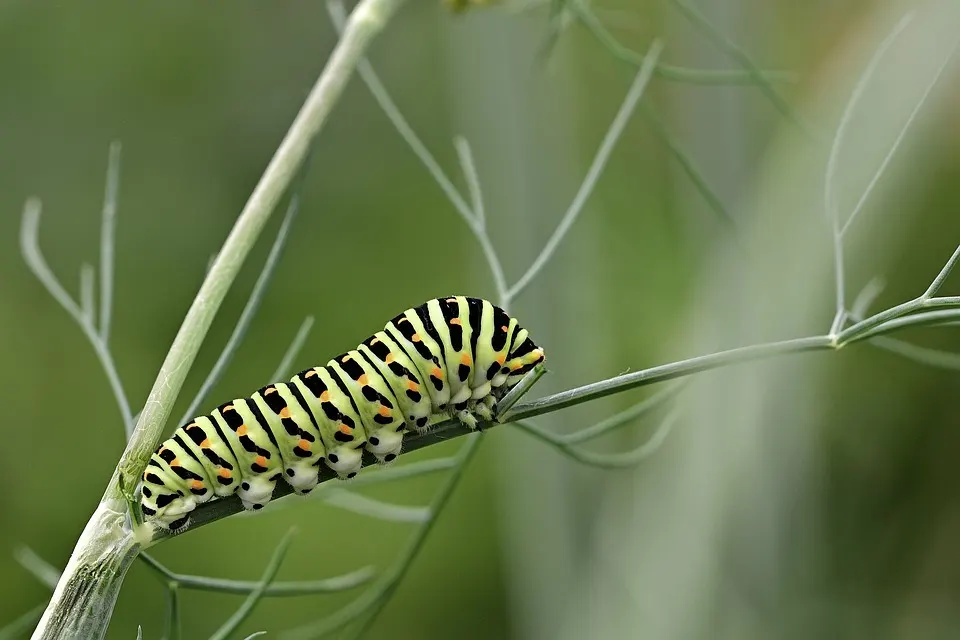
Caterpillars
Like with most critters, there are good caterpillars, and there are the not-so-savory variety. Good caterpillars are those that function merely as pollinators and prey for those higher up on the food chain. Destructive caterpillars are those that devour entire leaves off your plants in one sitting. Nature thrives on equilibrium and, for the most part, keeps itself relatively well regulated. This is done through the food chain.
Organisms serve a purpose, either by breaking down other biological material for easier absorption by something else, by propagating other life forms by pollination, or simply as prey for something bigger. Each organism has its place, and usually, the system works quite well. But sometimes, there is too much of one organism due to a sudden change in the environment that encourages reproduction on a grander scale, and then the entire system is out of balance. Sometimes this happens with caterpillars. We rely on other larger organisms to keep the caterpillars in our gardens under control, but sometimes that just isn’t possible.
Caterpillars are one of the easier culprits to spot on your hibiscus. Look for their squishy green bodies or little dark heads, or look for the consequences of their unbridled extended stay in your garden. Most caterpillars skeletonize leaves. This is to say they eat the green plant matter in between the veins on the leaves. This leaves the leaves looking like skeletal remains of a once lush and balanced ecosystem.
You can also spot caterpillars by their bite marks. Unlike smaller organisms, caterpillars leave very distinctive bite marks in your hibiscus plants. Caterpillars also like to snack on fruits and flowers, so you’ll likely find a few bites out of the petals on your hibiscus. Look for other signs like rolled or webbed leaves, excrement, and even eggs. There are also caterpillars that bore into the woody parts of older, more mature hibiscus plants; these are far harder to spot. By the time you find a wood borer, the brunt of the damage is usually already done.
Caterpillars find themselves on the lower end of the food chain. Their soft squishy bodies are a good source of nutrition for birds, small mammals, and bigger insects. There are usually several creatures in your garden who thrive on keeping caterpillars at bay, but as we discussed above, sometimes this isn’t always the case. Luckily there are ways you can get better control of your caterpillars if you notice they’re doing more damage to your plants than usual.
The Hands-on Approach
The most straightforward way to keep control of your caterpillar population is to pick them off of your hibiscus by hand and drop them into a solution of soapy water. Soap is something you’ll often see with pest control for soft-bodied insects. There are two reasons why soap is effective.
- Spraying your plants with soapy solution makes the surface of your hibiscus too slippery for them to cling to.
- Soap messes up soft-bodied insects’ cell metabolisms and dissolves the thin waxy outer layer that protects their body moisture. This leeches vital fluid from their bodies and kills them, just like aphids do to your hibiscus.
The hands-on method allows you to be very selective with what caterpillars and critters you allow in your garden. Pick off those doing damage to your plants, and leave the rest to benefit the ecosystem.
Empty Nesters
Another hands-on approach to getting rid of caterpillars is to wipe an entire generation off the face of the earth for good. This is done by waging war on the family seat, the stronghold, the caterpillar’s nest.
You’ll have seen a number of these in your lifetime. They look like tiny hanging homes spun from the finest silks. These silk-spun caterpillar houses hang from trees and shrubs, in this case, probably your hibiscus.
Take any tool of your choice and punch a hole into the side of the silk construction. A broom handle works like a charm. Next, you’ll want to scrape the inside walls of the tiny abode and forcibly remove all its occupants. Lastly, tear the house from its hanging place and put it into a bucket of warm soapy water. This will kill any survivors. In the war against pests, we take no prisoners.
The absolute best time to mount your attack on the caterpillar’s home is early in the morning or late in the evening. These are the times when most of the caterpillars will be inside doing stuff around the house. Take them by surprise to ensure your victory. Once you’ve done this, you might still need to go around and remove any stragglers stuck on leaves by hand, but the time and effort will be well worth it to safeguard your hibiscus from infestation.
These two methods are time-consuming, however, and require you to be willing to kill a caterpillar with your bare hands. Not everyone is on board with that, precisely because of the beautiful butterflies some caterpillars are destined to become. For those of you who don’t want to take the hands-on approach, there are other less personal ways to control your caterpillars.
Food Poisoning
Hands down, one of the most effective ways to regain control of your garden without getting your hands full of caterpillar blood is an excellent extermination solution called Bt. Short for Bacillus thuringiensis, Bt is a naturally occurring soil bacteria that has a handle on caterpillar control. This is essentially a poison that destroys the stomach lining of critters like caterpillars, killing them in just a few days.
You’ll find Bt in both powder and liquid form, making it relatively versatile as a pest control solution. Dust or mist your hibiscus with Bt and wait for the ravenous caterpillars to make their appearance. Caterpillars haven’t built up any immunities to Bt, so you’re guaranteed a caterpillar-free garden in a matter of days.
Because of the differences in how their bodies are formed, you can rest assured that Bt won’t harm any of your vital pollinators, pets, or even you. The bees and butterflies you rely on to propagate your prized hibiscus bushes naturally are entirely safe.
Keep an eye on the location of the infestation, and if needed, apply more Bt after about a week. You’ll also need to reapply it after rainfall and even particularly hot periods because the water and direct sunlight break Bt down after some time.
Homemade Brew
Formulations like Bt are incredible and work wonders, but sometimes they can be a little spendy. If you’re looking for a cheaper way to eradicate caterpillars, look no further than your kitchen cupboards.
This home remedy is sure to get the job and do so without costing you an arm, a leg, and a few teeth. All you’ll need is a tablespoon of molasses, a teaspoon of dish soap, and a jug of warm water. Mix well, and put the solution into a spray bottle. Alternatively, you can mix up a solution of three crushed cloves of garlic, one tablespoon of vegetable oil, a teaspoon of dish soap, and a jug of water. This isn’t a high enough concentration of garlic to deter vampires, but it should do the trick for caterpillars.
If you genuinely love all little critters, especially those that develop stunning wings in fantasmagorical colors and patterns, this will be your method of choice. These solutions don’t kill the caterpillars; they merely deter them from wanting to snack on your hibiscus.
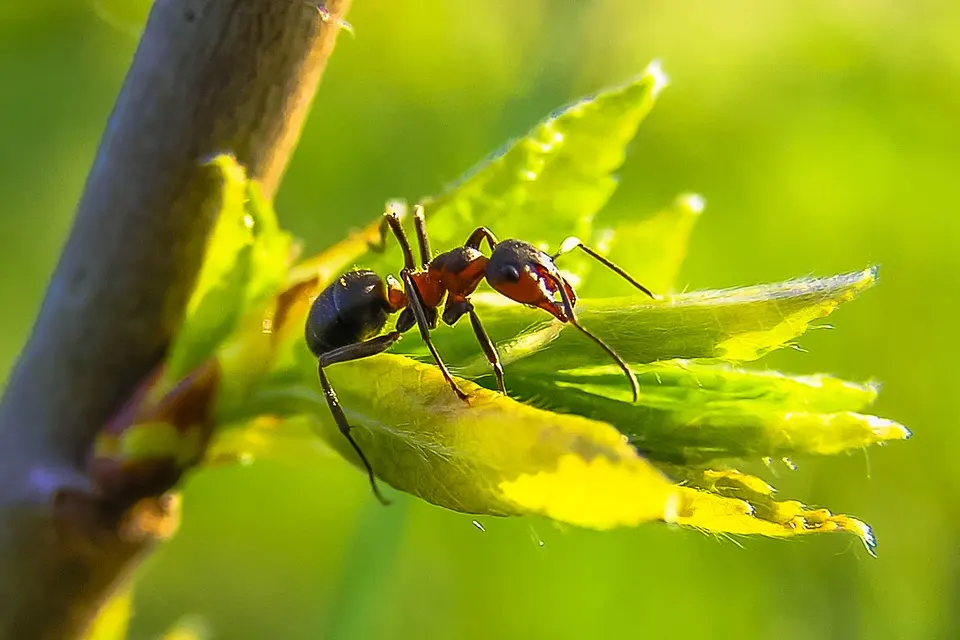
Ants
Most of us are no strangers to the odd ant infestation in our homes. They leave long trails of their kin along your window sills and doorways and always seem to be accompanied by random piles of sandy material. They’re such a nuisance in the home, but have you considered what damage large swathes of ants are capable of doing to your garden?
Ants are an enigma. They very seldom feed off your plants directly like other pests, but their industrious efforts often starve plants of vital nutrients and any means of acquiring them. The vast colonies that ants build under your garden can disturb root development and even suffocate already developed root systems.
Ants do, however, have their uses. When they aren’t focussing all their building activities on the ground directly below your hibiscus, the colonies they make and pathways they weave between them help to soften the soil and improve air circulation and water drainage. This is actually incredibly beneficial to plants like hibiscus because they thrive in well-draining soil.
An interesting factoid about ants is that they farm smaller organisms like aphids. Ants and aphids have a mutually beneficial relationship that safeguards each species in a different way. Aphids secrete a sugary substance called honeydew while they break down the organic material that makes up your hibiscus. Ants use the aphids as a near-infinite supply of honey, which they greatly enjoy. In turn, the ants protect the aphids from other organisms that seek to destroy them. This is why you’ll often see ants up and down plant shoots and stems; they’re collecting honeydew.
Interesting facts about pests aside, what can you do to protect your plants from ant infestation?
Defeat the Aphids
Aphids have a nasty habit of attracting ants. So the theory here is if you dispense with the attractions your garden holds for ants, the ant population will dwindle back down to where it should be for a healthy and harmonious ecosystem. Other pests that leech the vital sap from your hibiscus may also be a draw-card to your garden, so get rid of them too. No honeydew means much fewer ants.
Sugar Substitutes
There are many articles on the worldwide web that suggest using aspartame as an ant repellent and poison. Unfortunately, the evidence for both schools of thought to this end is fairly thin. Some professionals swear by artificial sweeteners, while others say it’s a waste of time.
The facts are simple. Artificial sweeteners have not yet been conclusively proven to kill ants. Additionally, the ants that are used in the tests to determine the efficacy of aspartame in the eradication of ants are most notably fire ants, a species not common to all the world’s gardens. Aspartame and other sweeteners could be used as bait for ants, but they are usually more expensive than granular sugar, so using sugar would be cheaper.
If you do use a compound like sugar or artificial sweetener, this will only be to attract ants to whatever trap you’ve set. For this to be an effective control mechanism, you need the addition of something that is toxic to ants, which brings me neatly to my next point.
Borax
Borax, or boric acid, is likely what you’ll use to make your sugar solution deadly to your tiny foes. Exercise caution though, borax is also toxic to humans and pets. So use gloves when you work with it. Improper usage of borax is linked to nausea, vomiting, and diarrhea if ingested. Large amounts of this toxic compound can cause shock and kidney failure. Borax can also irritate your eyes and skin, and if you inhale it, it can hurt your nose, lungs, and throat.
Taking into account the damage that borax can do to humans, you can imagine how deadly it is to little critters like ants. When ingested, borax is a major irritant with the ant’s internal biological structure, and it disrupts critical infrastructure, like their digestive systems. This total disruption of the ant’s internal structure eventually leads to death. But there’s a silent beauty to how suitable borax is as ant poison.
To understand borax’s efficacy, we need to be familiar with ant society. The little critters you see walking up and down your hibiscus are only one small part of the entire social system of the industrious ant. These are the scouts. Their duty is to venture out into the world and collect food which they bring back to the nest. These are also the ants that engage in activities like aphid farming, something they’re incredibly good at.
Under the ground, deep within the heart of annoying ant mounds and underneath your hibiscus, there’s a whole other world of ant society. Most notably, you have the queen who lays the eggs. You also have her support structure, the ants known as reproductives, and the vast network of underground worker ants. It is not enough to just eradicate the surface wanderers; this is where borax comes in. As we established above, ants don’t ingest all that they find on the surface, some are ingested to maintain energy, but the bulk of what they harvest is taken down to where the queen is.
Borax is a slow-acting agent that gives the surface scouts enough time to get down into the belly of the beast before inflicting its final blow. This way, borax is the inadvertent weapon of choice for surface scouts unwittingly committing the mass genocide of their entire nest. They also quite innocently pull a page out of Macbeth’s playbook and commit genocide by poisoning their queen, but instead inheriting the kingdom upon the queen’s death, all they get is a seat next to her on the train to ant-afterlife.
Fossilized Algae
If you want something that does a similar job to borax without the horrendous health risks, try diatomaceous earth. This food-grade compound is made up of the fossils of hard-shelled algae known as diatoms. Because it is food-grade, it is completely safe for humans to interact with, and it won’t harm your pets. It is, however, not at all safe for ants.
Food-grade diatomaceous earth is a fine powder that dehydrates ants. This slow-acting solution is also toxic to slugs and cockroaches, so it can benefit more than just your hibiscus and the rest of your garden. Because it is slow-acting, it will take some time for diatomaceous earth to completely eradicate your garden of ants, but it works well to keep them under control. This is another method that can take care of the entire nest because, just like borax, diatomaceous earth gives the ants above the ground time to get downstairs into their nests.
No Sugar, Just Spice
You may consider sprinkling a particularly spicy substance around your hibiscus. Ground cinnamon, cayenne pepper, and chili powder are good products to use for this. While these don’t do any damage to the ants, sometimes that isn’t the name of the game. If you have no grudge against your garden’s ant population and simply want them to leave your hibiscus alone, this is a more than suitable solution.
Landing up in Hot Water
Hot water, any water for that matter, is another hotly contested medium for ant eradication. There is, however, a logical and straightforward answer to the question of whether water can kill ants. Yes. Ants will eventually succumb to their watery surrounding if isolated in it and drown. Ants cannot swim, at least not the ants that you find in your garden. Scientists have, however, found a species of ant that can swim, but that is neither here nor there within the context of your hibiscus’ health.
The issue with ants and water is the sheer duration of their drowning. It can take up to 24 hours for an ant to drown completely. This is because of the ant’s biology. Ants are among the oldest living creatures to walk this earth; they were alive and thriving during the time of the dinosaurs. It would be foolish to think that surviving cataclysmic events such as the great dying wouldn’t encourage some kind of mutation and evolution to be less prone to dying. And it has. Modern ants are covered in a thin film of oil that protects the structural integrity of all their biological bits and pieces. The oily residue keeps their exoskeleton safe, the exoskeleton keeps their soft inner stuff safe, and that way, the ant, is quite the survivor.
You can circumvent this neat little oily trick of evolution by adding soap to your water solution. The soap will neutralize the oil, allowing the ants to drown much faster. You also don’t really need to shove copious amounts of sugar or aspartame into the solution because ants actually quite enjoy the odd drink of water. This is why you might find ants floating around in cups with water left in them, or even worse, your kettle.
Pouring hot water directly down the hole in the top of the ant mound is a valiant effort, but one that will take time and is essentially useless. You can achieve the same slow-acting drowning by using room temperature water because even water that has just come to a boil will cool down rapidly when it touches the soil.
You can, however, use water to disorientate ants and keep them from entering their nest again while you take care of the queen with other methods. Ants walk in long lines and queues because of the pheromones they exude. These pheromones act as a sort of a breadcrumb trail that other ants can follow back to the nest. If you pour soapy water along the line of ants, you’ll neutralize the pheromones, and the ants likely won’t be able to find their way back home. And when they do, their home will probably be destroyed.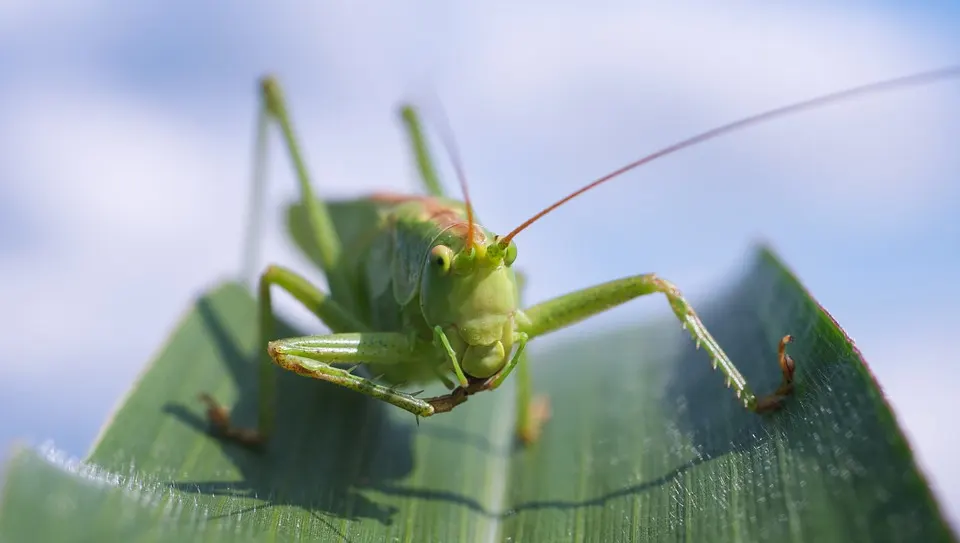
Grasshoppers
We’ve all seen A Bug’s Life; we’ve all come face to face with the hideous damage that grasshoppers can do to entire wheat fields, never mind your garden. Simply put, grasshoppers have the ability to decimate your garden. With grasshoppers around, your hibiscus stands no chance.
Before we explore further into the ways grasshoppers are harmful to your hibiscus, let’s quickly discuss the benefit of grasshoppers in nature. Grasshoppers are cleaners. They are one species of organism in the natural world that exists to clear away dead decaying biological matter. They are of paramount significance in the bigger picture, and like most cleaners, their waste is an excellent source of nutrients for new growth and other organisms.
Grasshoppers spend their entire lives moving from place to place, facilitating the breakdown of decaying biological matter and leaving a fresh source of plant food in their wake. When they die, they are broken down by other cleaners and become a valuable part of the process they work so hard to proliferate.
The issue with grasshoppers is that they don’t always concentrate their meticulous and unparalleled deconstruction efforts on biological matter that is dead or dying. Your hibiscus in the corner is thriving, truly living its best life. But this is of no consequence to grasshoppers. They have one critical function. Break down biological matter, excrete fresh nutrients, move on. That is their entire life’s work. And no matter where in their lifecycle they are, be they young nymphs or full-grown adults, they will decimate all the lush, green biological matter they can.
Grasshoppers lay their eggs toward the end of summer. These eggs are buried in pods beneath the soil, where they stay through the winter in a process called diapause. The eggs hatch into nymphs early in the following spring, and then, their work begins. Nymphs feed on plant matter out of necessity. They need nourishment to make it to peak adulthood. But they are indiscriminate with what green plants they eat and how much of it they consume.
Once a nymph has exhausted its food supply, a relatively innocent term for destroying the patch of garden where they were born, they move on to greener pastures with the intent of turning them into a dry, dead desolate wasteland. Grasshoppers do this their entire lives until winter inevitably comes and turns them into lifeless husks like they do our plants.
It’s not all bad news, though. There are many ways to handle a grasshopper infestation and even more ways toward preventing it in the first place.
Plant Flowers
If you are a plant lover like me, this will definitely have you all excitable. As it turns out, there are numerous plants and flowers that grasshoppers simply find repulsive. One of the better and most humane ways to prevent grasshoppers from setting foot on your turf is by filling your garden with flowers. Who would have thought it could be that easy? To this end, some of the most beneficial flowers are dianthus, lilac, salvia, crepe myrtle, and artemisia.
This is also the perfect excuse to get started on a juniper bonsai to keep in your garden; Grasshoppers absolutely hate juniper. Gone are the days when juniper is favored purely because of its looks and the fact that its berries are used in the finest gins, although, personally, that is still a massive plus. Other plants that grasshoppers hate include forsythia, lantana, and moss roses.
Vampire Spray
Yes, we have found yet another critter that shares an attribute with vampires. Garlic spray is incredibly effective against grasshoppers; They detest the taste. Coating your hibiscus in garlic solution is a surefire way to stop grasshoppers from using your plants as an environmentally friendly 7/11. You can use the same garlic solution we highlighted earlier for this purpose, or you can buy specialized garlic spray and save yourself from getting vampire repellent all over your hands.
Pepper Wax
Pepper wax spray works similarly to garlic spray in that it is a deterrent and not actually harmful. But much like sprinkling chili powder or ground pepper on the ground around your hibiscus, spraying your plants with pepper wax spray creates a barrier that critters simply don’t want to cross.
Neem Oil
Neem oil is harvested from the Australian neem tree and is an excellent repellent. More than merely repelling grasshoppers from terrorizing your hibiscus, neem oil is able to slow down how rapidly and profusely grasshoppers lay their eggs. This means that by using neem oil, you can slowly decrease grasshopper numbers and eventually eradicate them completely, without killing them directly.
Infectious Disease
Let me preface this by saying that this method is not harmful to humans, even though it requires letting an infection loose on the grasshopper population. Nosema Locustae is a single-cell organism that infects and completely obliterates grasshoppers, no matter what stage of their lives they’re in. These organisms are found in a product called nolo bait and wreak havoc on multiple generations of grasshoppers.
For the best chances of success, spread the product after the grasshoppers have hatched and have turned into nymphs. Once ingested, the organisms will move through the grasshopper’s internal structures and essentially poison their blood. The most fascinating part is those remaining grasshoppers, due to their nature as cleaners, will eat the dead grasshoppers, becoming infected themselves. You only need one infected grasshopper to keep the cycle of death and destruction moving on swiftly, safeguarding your hibiscus in the process.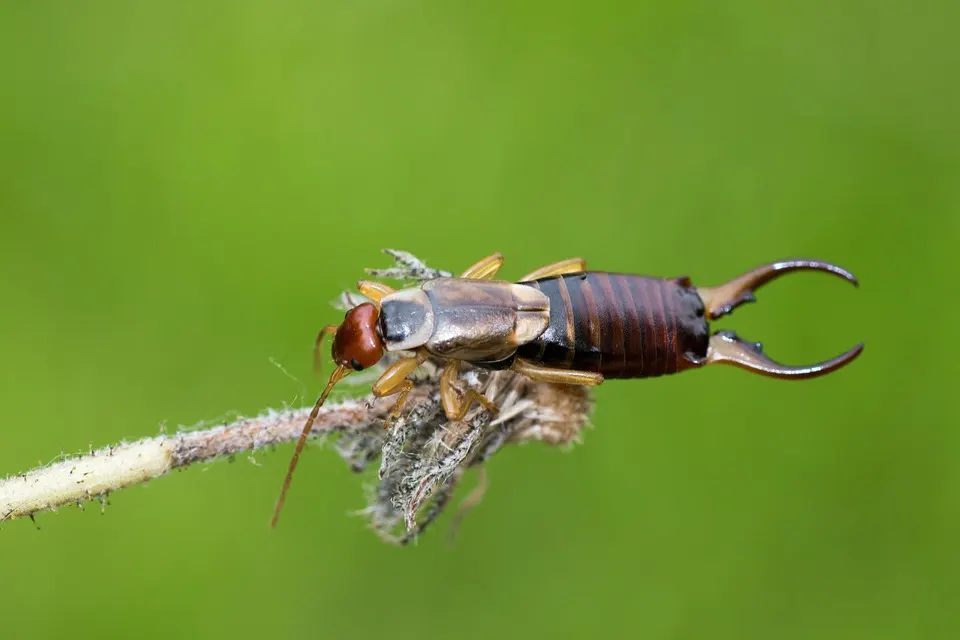
Earwigs
2021 was a big year for these bad boys. Earwigs experienced a record high population surge brought on by the sweltering heat and humidity we felt in June. This created the perfect environment for the little critters to flourish. Earwigs can be either friend or foe when it comes to your hibiscus.
Heavily associated with old England and the myth that your brain is their desired lunch, earwigs are actually relatively harmless to humans despite their menacing appearance. In fact, the entire connection between the earwig and the human ear is reportedly widely misunderstood.
Some linguists say that the confusion occurred because of the shape of the critter’s wings.
Earwigs belong to the order Dermaptera, which means skin wings. This refers to the leather-like properties of the earwigs’ wings, which also somewhat resemble the shape of the human ear. Linguists suggest that the name was simply incorrectly translated from old English, where the critter’s name meant ‘ear wing.’ Leave one letter out of that neat configuration, and suddenly you’ve infected the entire Great British population with the fear that these critters are desperately trying to crawl into their ears and eat their brains.
As the old saying goes; Get an earwig, and ye shall go deaf. What’s more reputable and believable than an old saying? After all, they are shaped perfectly for inner ear explorations, with their long slender bodies and massive pincers. Luckily, this is nothing but nonsense and twaddle. There have been cases of insects crawling into people’s ears, but the worst-case scenario is that it results in an ear infection. And high numbers of these cases have only been recorded in places with severe infestations in the home and poor hygiene standards due to an unfavorable socio-economic climate.
Earwigs have a vital role to play in your garden as one of the omnivorous critters that snack on other critters and keep them at bay. So seeing a few earwigs wandering around your property or even scurrying past your hibiscus should not concern you much. The problem occurs when they swarm.
To match their horrifying appearance and blood-curdling lore, earwigs also have a habit that lends itself equally well to the horror franchise; in great enough concentrations, they swarm. This is a terrifying sight and will have anyone heading for the hills. But the fact remains that these critters cannot expressly hurt you. So what can they hurt?
Earwigs belong to a similar class of insects as grasshoppers; They are nature’s cleaners. They, too, are built to rid the world of decaying plant material and leave fresh nutrients in their wake. But just like grasshoppers, if there is no decaying plant material around, you will find them snacking on your thriving plants.
Earwigs favor ornamental flora, including flowers like hibiscus, but will also attack your fruits and vegetables if given half a chance. These critters chew irregularly shaped holes in the leaves of your plants. This is just as bad as destroying the entire plant because your hibiscus cannot photosynthesize without leaves. Earwigs destroy the vital biological infrastructure plants have in place to support their survival, thereby killing your hibiscus. Worry not; if you do have an infestation of these critters, there are things you can do to get rid of them.
Dry Spell
Earwigs love moisture. If you notice a considerable presence of earwigs in your garden, the first thing you should do is check if there are any moist patches of mulch that may be attracting the little bugs. Often the only tactic necessary is to let your garden dry out a little. This will encourage the earwigs to move on to moister pastures and leave your hibiscus alone. Hibiscus doesn’t like moist soil in any case, so it might be a good idea to keep the soil relatively dry between waterings for the plant’s safety on all fronts.
Bait
A homemade trap constructed with damp newspaper or toilet rolls should do the trick too. Earwigs are nocturnal and feed only at night. During the day, they spend their hours searching for warm moist places to rest in. If you check the newspapers the following morning, you should find loads of earwigs loafing within the moisture of the pages. However, if you are having trouble attracting any, use a little bran or oatmeal to speed things along.
You can also use tuna or pet food cans containing a small amount of vegetable oil to attract earwigs. They’ll lock on to the oil as a food source, and you’ll likely be able to rid your garden of vast numbers each day.
Sticky Situation
One of the easiest ways to deter earwigs is by making sure they can’t actually get to your hibiscus. There are myriad products you could use to this end. Sticky tape, petroleum jelly, and Tanglefoot are all excellent choices. As long as the substance is sticky, you’re good to go. Just be careful not to accidentally attract another pest by using a sweet substance. And in the case of things you can find around your home, sticky usually means loaded with all sorts of sugars.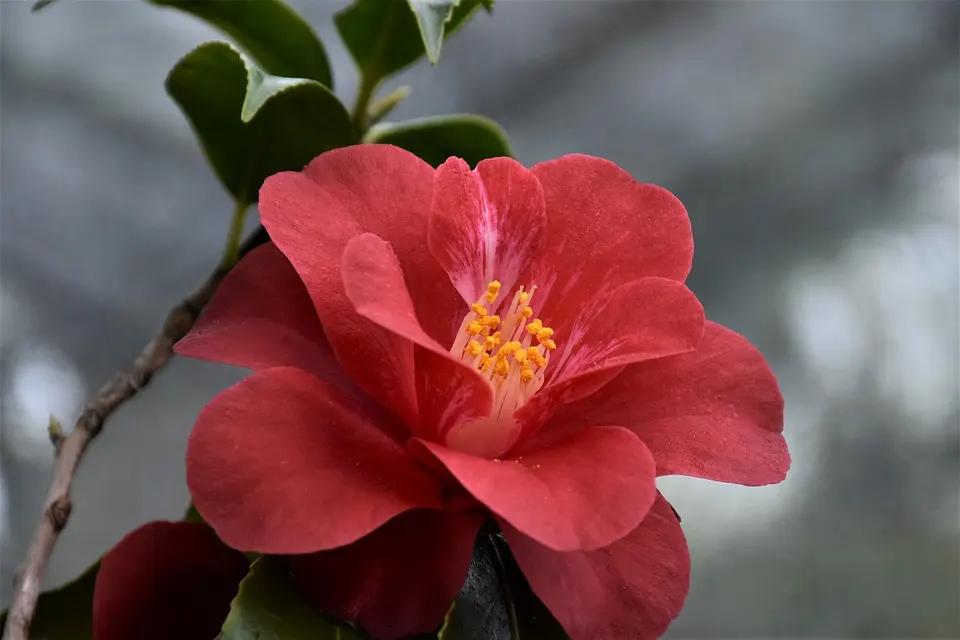
Final Word
There are so many critters that can do severe damage to your hibiscus. The tricky thing is that most of these critters are not malicious by nature; They’re operating precisely as they should be doing. Their entire purpose is to break down decaying biological material and turn it into a new source of nutrients for the coming growing seasons.
The issue is that sometimes there are just too many of these specific types of bugs, and the system is overloaded with cleaners. Insects don’t possess the kind of complex computers we have in our heads. They are advanced in many ways, but they are still primitive life forms in many more. If the system is suddenly not an appropriate place for them to be performing their vital tasks, in other words, cleaning, they don’t recognize this as a deterrent. These bugs will turn their attention to your thriving hibiscus if there is nothing that is already decaying.
Therefore, sometimes we as gardeners need to step in and bring the ecosystem back into equilibrium. We’ve given you the rundown on the biggest culprits to plague your hibiscus. We’ve also given you copious information on how to root them out for good. Some methods are inherently violent and vengeful; some are merely mild deterrents. Now it is your turn to choose a method that works for you.
Armed with all this beautiful knowledge, go forth and rid your hibiscus and your garden of infestation. Feel free to implement your own strategies and try these tactics on more than one type of critter. You’ll find that creatures with a similar biological makeup are largely affected in the same ways by the same products. And always remember, no matter what critter you are dealing with, diatomaceous earth is your friend.







